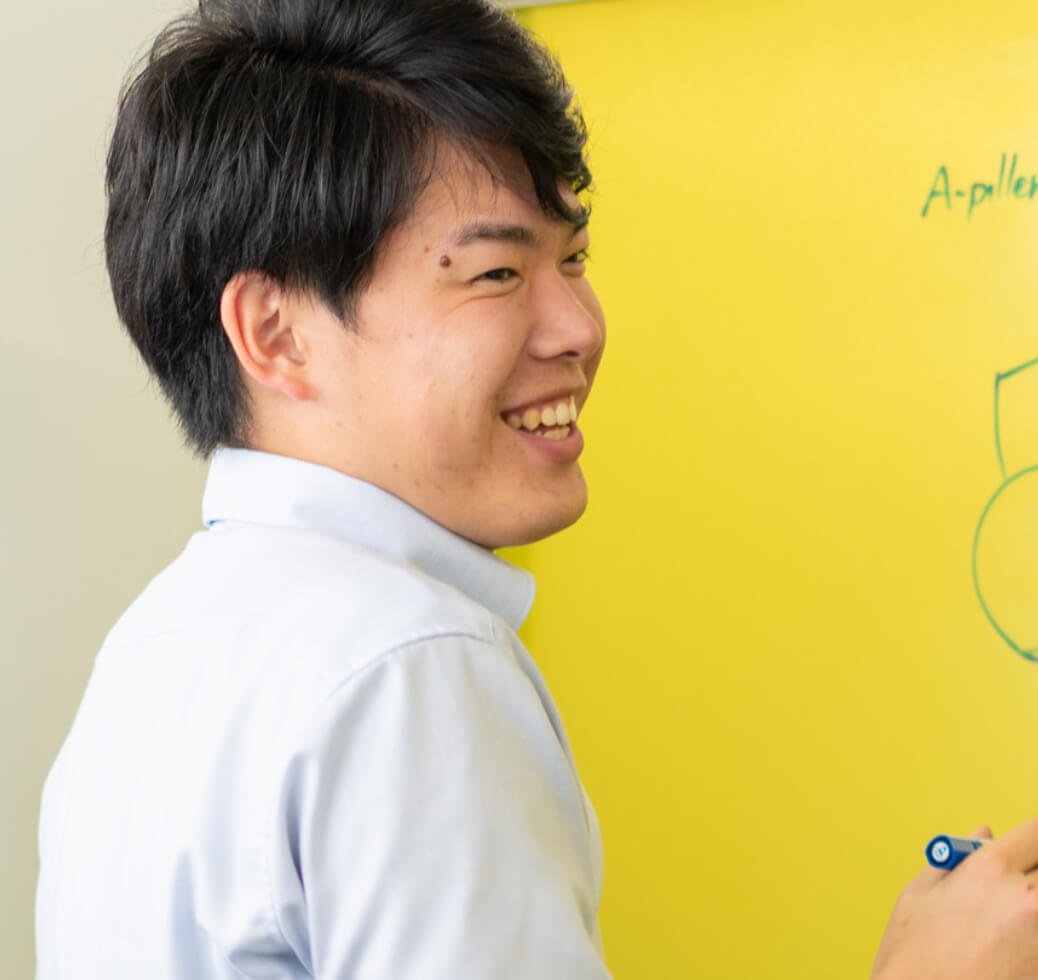Aspiration of Kubota Designers on Expressing Kubota Uniqueness
A round table discussion with members of the design teams for exterior, interior, and communication design

Kubota designers come from different technical backgrounds and have their own perspective. The design aspects they specialize in are either exterior, interior, user interface/user experience, or communication design. Representatives from each specialty discuss how they expresses Kubota through design, and the processes and ideals behind that.(Affiliation/position as of March 2020)
-
Exterior Design Team
Wataru Sasaki
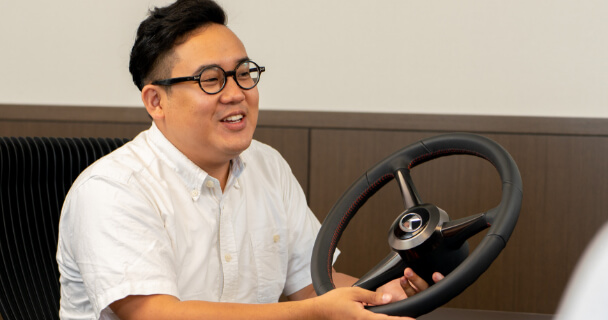
-
Interior Design Team
Ryu Hashimoto

-
Section Manager, Exterior Design Team
Yoshitaka Higashikawa
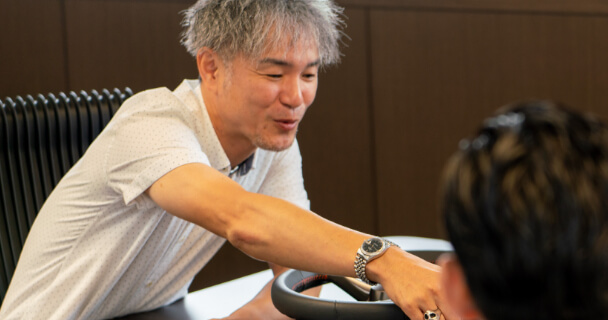
-
Section Manager, Interior Design Team
Gen Futagami
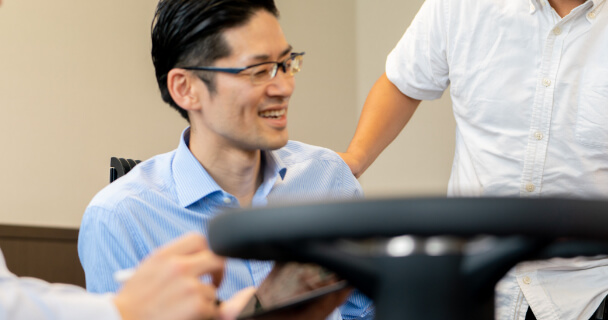
-
Section Manager, Communication Design Team
Tomonori Kaneko
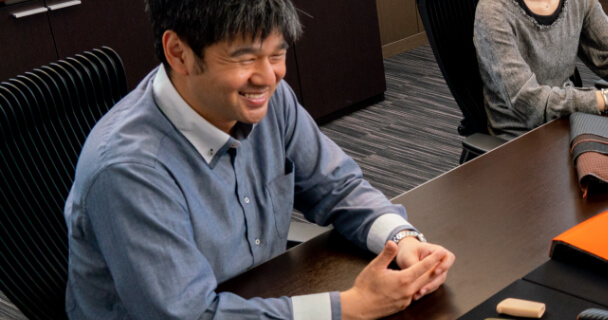
Multifaceted discussions and thorough customer perspective create designs that lead to the future
Kubota’s Design Center has a team-oriented approach, with each team having expertise in its own specialty. However, whatever the product, design discussions will extend beyond the parameters of individual specialties. Sasaki, Exterior Design Team comments that sometimes we notice problems the others might not have seen, because we come from different specialties. Hashimoto, Interior Design Team (User Interface) also agrees to this point.
Hashimoto: Yes. Whatever the product, members from other teams will check our proposals, and then we all brainstorm, aiming for something concrete. Even if the focus is on a prototype’s exterior, we joint the meeting and may share our suggestions to the team. Because we’re looking at things from a different angle, we might notice something they hadn’t caught.
Sasaki: We are specialist of different design areas striving to achieve a common goal as a team. By sharing suggestions and comments from our own specialty, we are able to develop a product with a multifaceted point of view.
What do you value to develop a design that is the best for customers?
Hashimoto says, “We visit and see the location where the product will actually be used.”
Hashimoto: We will observe how the product being used on site, and operate it ourselves, to feel and discover what concerns the user has, what kinds of mistakes are likely to arise during operation, and what the operator finds difficult to understand. In our minds we become the user. We thoroughly pursue how to eliminate user concerns, how to make operating the machine easier, and how to prevent mistakes. This whole process is the source of a design with Kubota uniqueness.
By becoming the customer, understanding the customer experience from different angles and getting our teams together to express different opinions help resolve problems not just in front of us but also problems down the road. That is what the Kubota design is all about.
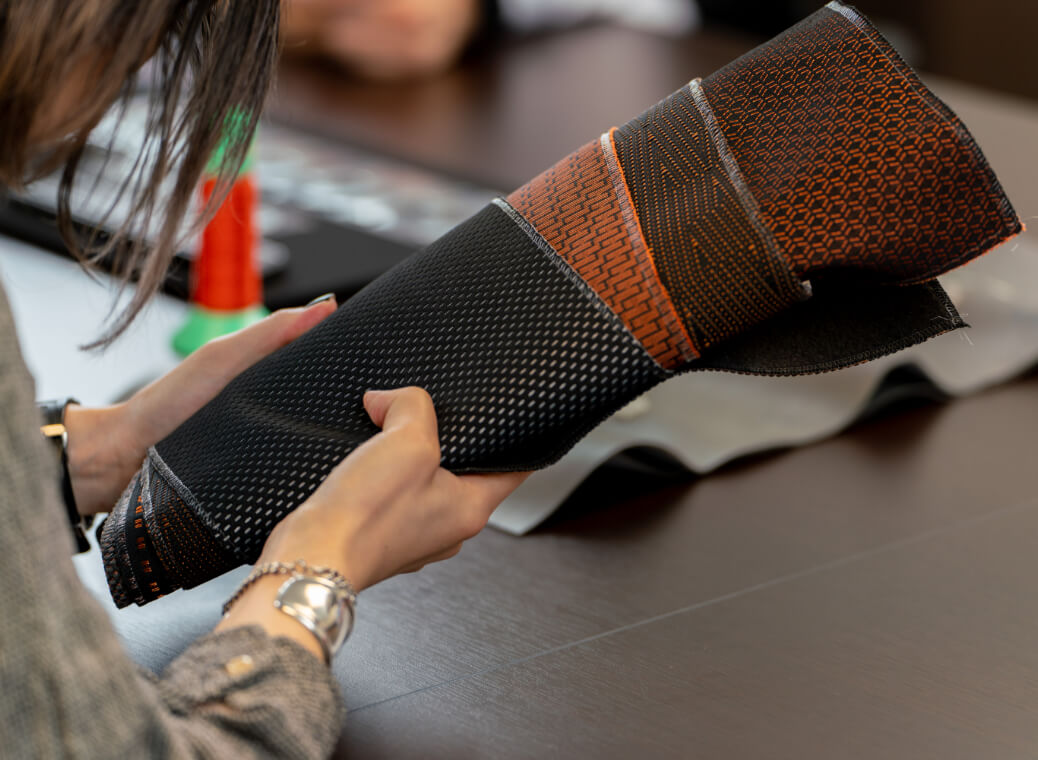
Difficulty of Designing a Future One Step Ahead
Our design aims to solve current problems while leading us into the future. The philosophy of “One step forward into the future to develop a model with the next 5 or 10 years in mind" inspires Kubota design. How do designers transform that into products?
Higashikawa: Agricultural and construction machineries have a long lifespan. They are designed to withstand the pressures of time in different situations. We face a dilemma, when we design a new model while we look critically at the model we designed before. It is an awkward position to be in. Developing a new model whose design will be respected over the next 10 or 20 years means criticizing our old design. This is very difficult to do, but at the same time, it is an interesting challenge for Kubota designers.
If we apply the “one step forward into the future” approach too strenuously, our design may, depending on the concept, confuse existing users and not meet with a favorable response. For example, take touch panels, which are now common in many places today. If the user interface changes drastically, users may have difficulty to adapt if they’re used to an older or somewhat different type. Finding the right balance is hard, as all the designers say.
Futagami: Mr. Hashimoto, how do you find the right balance?
Hashimoto: First we think about what needs to be improved, then we ask ourselves what should be changed and what should be kept. Then we identify reasons why some things need to be changed and get the agreement of other team designers while making gradational decisions on upgrades. That takes us to a design that is one step ahead of its time.
Designs that users find innovative and are comfortable with — designers get hints from many sources, to come up with designs that are one step ahead of the time. Those sources will differ, depending on the designer’s specialty.
Kaneko: What are some of the things you get hints from?
Sasaki: From the world of nature, not from man-made things. For example, I might get an idea for a contour from a line formed by a plant.
Hashimoto: For me, I tend to check the ticket vending machines at a train station. Their design makes them easy to use, even for the first-time users of people of all ages. I examine the design and get hints from it.
Designs springing from “hints” like these will be discussed by the other designers, regardless of what their specialty might be. To avoid judgment calls based on individual likes and dislikes, designers base their decisions on logic. Designers are trying to achieve that with different approaches.
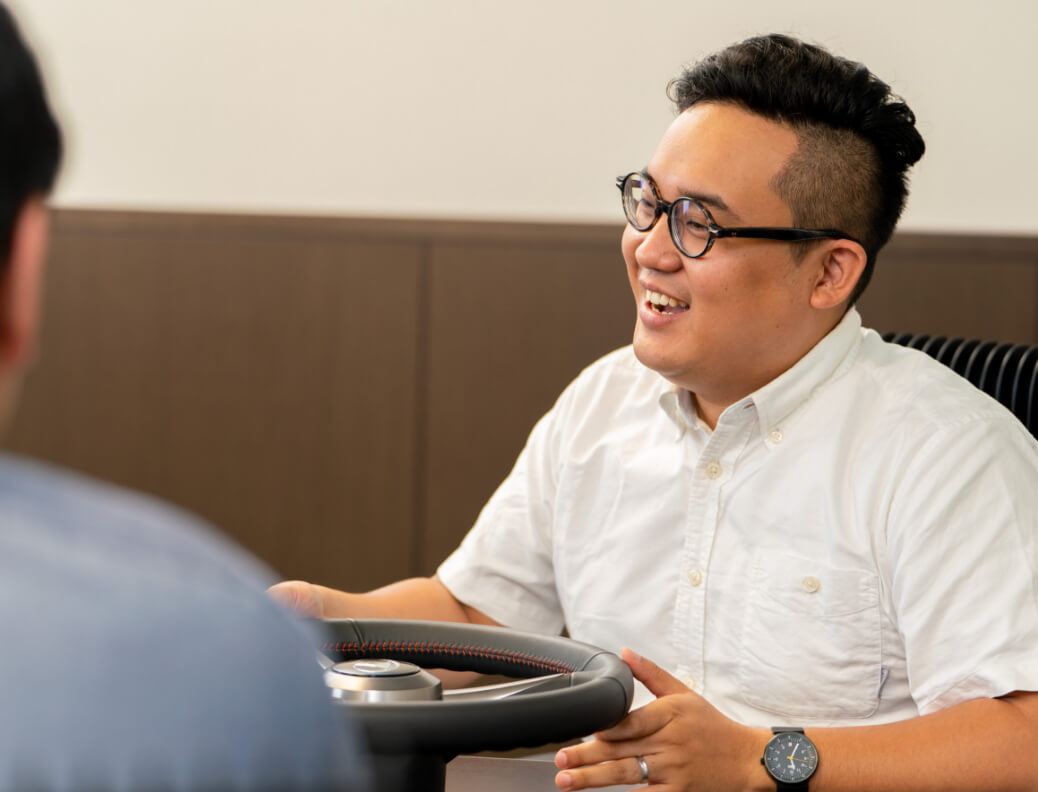

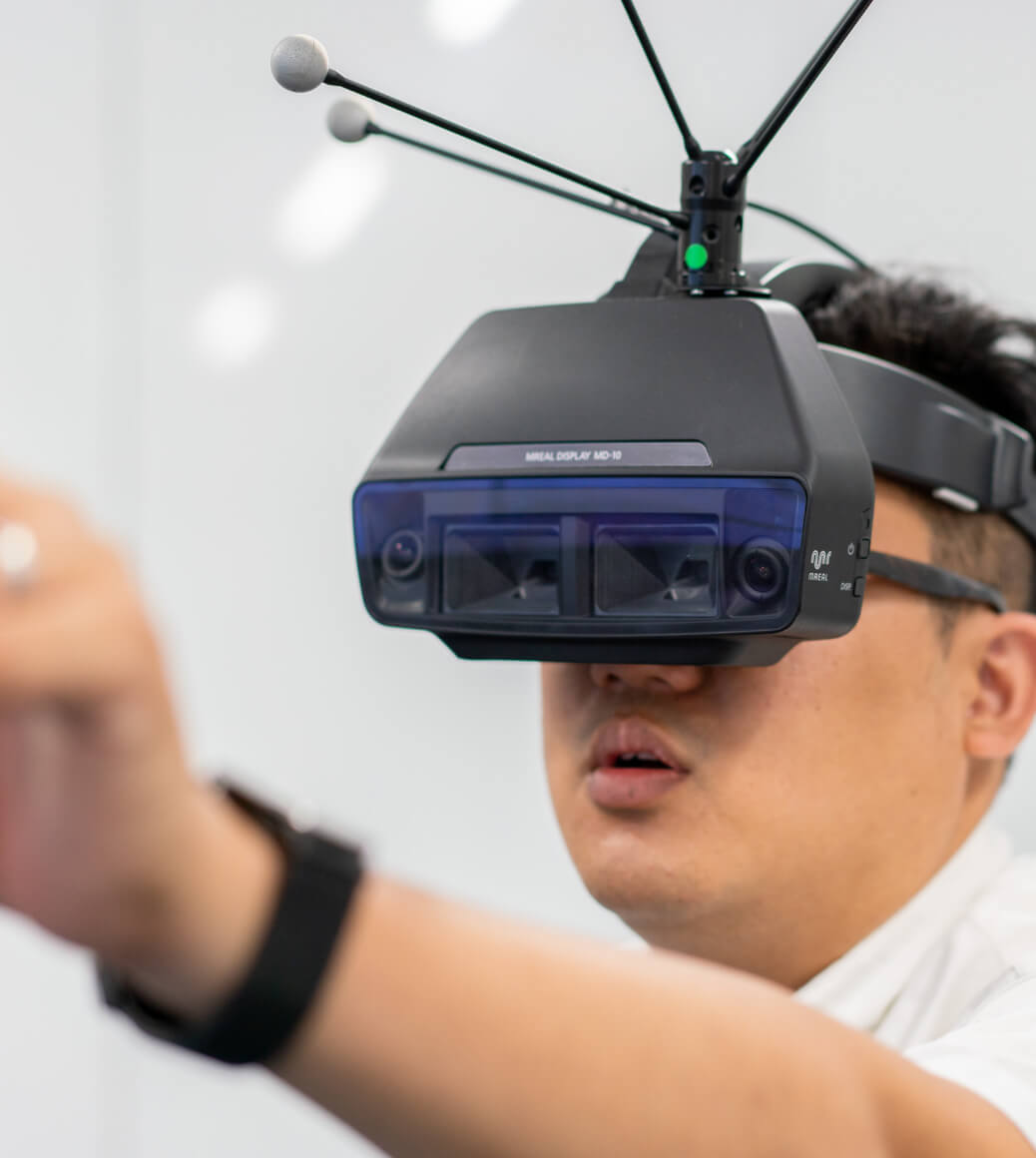
What are some of the thrilling part about working as a Kubota designer?
During the development process, Kubota designers focus on other elements besides color and shape. Other factors include ease-of-use, intuitiveness, interior, user experience, technical aspects, and cost. This is another attractiveness of the job. And there’s an element of excitement too — Kubota products are used for a wide variety of tasks in different areas, ranging from food, water, and the environment. This gives designers plenty of opportunities to get involved in products they have not dealt with much before.
When Sasaki was responsible for the design of tractors used in Thailand, at first he knew nothing about how they were used there.
Sasaki: So I went to Thailand and studied things like the lifestyle of farmers there, where they parked their tractors when not in use, how they felt when they placed an order for a tractor, how the village reacted when the tractor was delivered. All that certainly came in useful while working on the design for a new model. Gaining information in a field we know little about is all part of our job and I am enjoying it because it feels like my world is expanding.
Kubota’s corporate culture encourages workers to take on challenges even in fields new to them.

Kubota designers portray a future for people, the world and the earth
At an exhibition of new products held by Kubota in January 2020, the company unveiled its futuristic concept tractor. It points to a direction for technological development as it shifts toward the future of agriculture. Developing this concept model included expertise from Kubota’s Design Center. Their aim was not simply to come up with some futuristic, breath-taking appearance, but to portray how we can adapt to future changes in agriculture, to get a grip on still unknown farming challenges, and to lay the groundwork for the design of tomorrow’s agricultural machinery.
The concept tractor was just one project for the Design Center, as it conducts pioneering research into products and services for a future 5 or 10 years from now. Aiming to satisfy the future requirements of people and the global environment, Kubota’s Design Center is finding solutions by looking closely at things from the customer perspective, designing products that customers will value even five years or a decade from now. This spirit lies at the heart of the Kubota design.
